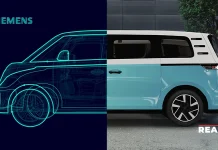The increasing adoption of self-driving cars like Tesla, Volvo XC40, Lexus LS, Audi, and much more sparked an interesting question. How do these cars sense the surrounding environment? Automotive 3D light detection and ranging (LiDAR) is the answer. According to Extrapolate, the global automotive 3D LiDAR market is projected to accrue a valuation of $1860.6 million by 2030.
This article sheds light on this million-dollar industry, how it works, its benefits, the challenges faced, and many more.
What is Automotive 3D Light Detection and Ranging (LiDAR)?
Automotive 3D Light Detection and Ranging (LiDAR) is an advanced technology that maps the surrounding area in three dimensions using laser pulses. It is widely employed in the automotive sector, especially in the advancement of autonomous vehicles.
Compared to conventional sensors like cameras and radar, LiDAR has several advantages. It is not impacted by headlights or sun glare and can function in harsh weather scenarios, including fog and rain. When compared to cameras or radar, LiDAR offers a more precise and thorough 3D picture of the surrounding area.
How Does Automotive 3D Light Detection and Ranging Work?
Automotive 3D Light Detection and Ranging (LiDAR) uses a sensor to project laser pulses into the surrounding area. Following this, the sensor picks up the reflected light and calculates how long it takes to bounce back. This time-of-flight data is used to create an environment point cloud or distance map by calculating the distances between the objects in the picture.
LiDAR sensors use a laser to pulse out light waves into their surroundings. Millions of laser pulses can be produced by these sensors every second. Every pulse is reflected to the sensor, and the Time of Flight (ToF), which is the distance between the object and the sensor, is computed using the light velocity.
The LiDAR system receiver picks up the reflected light, and it uses the time-of-flight information to create a distance map of the scene’s objects. This map gives machines and computers an accurate sense of their surroundings by providing a three-dimensional picture of the examined area.
What are the Benefits of Automotive 3D LiDAR?
Automotive 3D Light Detection and Ranging (LiDAR) technology brings numerous benefits, particularly in the automotive sector. Here’s why it’s so valuable:
- Precise Environmental Perception: It creates detailed 3D maps, helping self-driving cars accurately understand their surroundings and make informed decisions.
- Versatility in Conditions: It operates reliably in various lighting and weather conditions, unlike cameras, making it ideal for autonomous vehicles regardless of environmental challenges.
- Real-time Object Detection: LiDAR systems can detect and track objects like vehicles and pedestrians in real-time, which is crucial for the safe navigation of autonomous vehicles.
- Detailed Data Generation: It generates high-resolution point cloud data, useful for mapping and analysis across different industries.
- Enhanced Safety: By providing accurate and timely information about surroundings, this technology can help prevent accidents and ensure safer roadways.
- Facilitating Autonomous Driving: LiDAR technology is pivotal for autonomous vehicles, enabling them to navigate complex environments safely and efficiently, marking a significant step in automotive innovation.
What is the Range of Automotive LiDAR?
Automotive 3D LiDAR can detect surroundings and objects at distances ranging from a few meters to distances more than 200 m. However, LiDAR technology has difficulty detecting objects present in close proximity.
The best part of the LiDAR system is the ability to distinguish and provide high-resolution 3D object characterization without much back-end processing. This happens because it can focus laser light and short-wavelength infrared light with high precision, around 905-1550 nanometers, to give detailed images with a resolution of about 0.1 degrees.
Is Automotive LiDAR the Future of Autonomous Driving?
It truly depends on how autonomous the automobiles need to be in the future when considering their potential. In order to achieve complete autonomy, Automotive LiDAR appears to be the most promising option. Even though cameras are helpful, particularly during the day, they are ineffective at night and great distances. Conversely, LiDAR operates in all weather conditions and has a range of over 200 meters. Depending solely on cameras could cause you to overlook crucial details and be distracted by bright lights, as demonstrated by the Tesla collision.
LiDAR technology can resolve these problems by eliminating unwanted light sources. When it comes to safety, Automotive LiDAR is superior to other technologies. LiDAR in automobiles makes sense given the same costs and requirements for safety.
Read More Reports:-
Neurorehabilitation Devices Market
Online Dating Market
Primary Cells Market
Amino Acids Market




